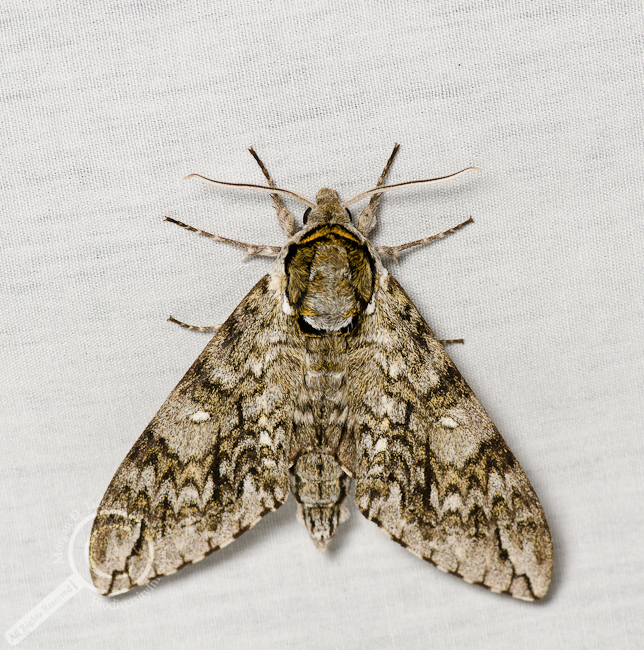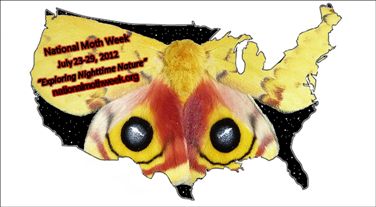I can’t help but get a little excited about sphinx moths; they’re so big and cool looking that I just can’t resist taking a photo (foreshadowing: expect to see more sphinx moth photos by the end of the week). This individual came in while I was blacklighting at the Rouge Valley BioBlitz, right in the heart of Toronto.
The Waved Sphinx Moth feeds on a variety of plants as a caterpillar, including ash (Fraxinus), privet (Ligustrum), oak (Quercus), hawthorn (Crataegus), and fringe (Chionanthus). and can be found across much of eastern North America throughout the summer.
As for parasites, being big and widespread has it’s drawbacks, as this species has at least 10 species of Tachinidae known to develop in it (Belvosia borealis, Compsilura concinnata, Drino incompta, Chetogena claripennis, Chetogena floridensis, Hyphantrophaga hyphantriae, Hyphantrophaga virilis, Lespesia aletiae, Lespesia frenchii and Winthemia datanae).
—————————-
Moth identification and biology from the Peterson Field Guide to Moths of Northeastern North America (Beadle & Leckie, 2012).
Parasite information from A Host-Parasite Catalog of North American Tachinidae Diptera (Arnaud, 1978).



